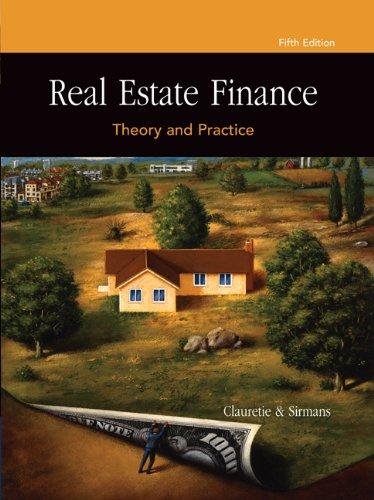
Hastings Corporation is interested in acquiring Vandell Corporation. Hastings Corporation estimates that if it acquires Vandell Corporation, synergies will cause Vandell's free cash flows to be $2.4 million, $3.2 million, $3.4 million, and $3.56 million at Years 1 through 4 , respectively, after which the free cash flows will grow at a constant 5% rate. Hastings plans to assume Vandell's $11.11 million in debt (which has a 7.5% interest rate) and raise addional debt financing at the time of the acquisition. Hastings estimates that interest payments will be $1.5 million each year for Years 1 , 2 , and 3 . After Year a target capital structure of 30% debt will be maintained. Interest at Year 4 will be $1.447 million, after which the interest and the tax shield will grow at 5%. Vandell currently has 1.5 million shares outstanding and a target capital structure consisting of 30% debt; its current beta is 1.60 (i.e., based on its target capital structure). Vandell and Hastings each have a 25% combined federal-plus-state tax rate. The risk-free rate is 3% and the market risk 5%. a. What is Vandell's pre-acquisition levered cost of equity? What is its unlevered cost of equity? Do not round intermediate calculations. Round your answers to two decimal places. Pre-acquisition levered cost of equity: % Unlevered cost of equity: % b. What is the intrinsic unlevered value of operations at t=0 (assuming the synergies are realized)? Enter your answer in millions. For example, an answer of $1.23 million should be entered as 1.23, not 1,230,000. Do not round intermediate calculations. Round your answer to the nearest cent. $ million c. What is the value of the tax shields at t=0 ? Enter your answer in millions. For example, an answer of $1.23 million should be entered as 1,230,000. Do not round intermediate calculations. Round your answer to two decimal places. $ million d. What is the total intrinsic value of operations at t=0 ? What is the intrinsic value of Vandell's equity to Hastings? What is the maximum price per an answer of $1.23 million should be entered as 1.23, not 1,230,000. Do not round intermediate calculations. Round your answers to two decimal places. Value of operations: $ million Equity value to acquirer: $ million Maximum price: $ per share Hastings Corporation is interested in acquiring Vandell Corporation. Hastings Corporation estimates that if it acquires Vandell Corporation, synergies will cause Vandell's free cash flows to be $2.4 million, $3.2 million, $3.4 million, and $3.56 million at Years 1 through 4 , respectively, after which the free cash flows will grow at a constant 5% rate. Hastings plans to assume Vandell's $11.11 million in debt (which has a 7.5% interest rate) and raise addional debt financing at the time of the acquisition. Hastings estimates that interest payments will be $1.5 million each year for Years 1 , 2 , and 3 . After Year a target capital structure of 30% debt will be maintained. Interest at Year 4 will be $1.447 million, after which the interest and the tax shield will grow at 5%. Vandell currently has 1.5 million shares outstanding and a target capital structure consisting of 30% debt; its current beta is 1.60 (i.e., based on its target capital structure). Vandell and Hastings each have a 25% combined federal-plus-state tax rate. The risk-free rate is 3% and the market risk 5%. a. What is Vandell's pre-acquisition levered cost of equity? What is its unlevered cost of equity? Do not round intermediate calculations. Round your answers to two decimal places. Pre-acquisition levered cost of equity: % Unlevered cost of equity: % b. What is the intrinsic unlevered value of operations at t=0 (assuming the synergies are realized)? Enter your answer in millions. For example, an answer of $1.23 million should be entered as 1.23, not 1,230,000. Do not round intermediate calculations. Round your answer to the nearest cent. $ million c. What is the value of the tax shields at t=0 ? Enter your answer in millions. For example, an answer of $1.23 million should be entered as 1,230,000. Do not round intermediate calculations. Round your answer to two decimal places. $ million d. What is the total intrinsic value of operations at t=0 ? What is the intrinsic value of Vandell's equity to Hastings? What is the maximum price per an answer of $1.23 million should be entered as 1.23, not 1,230,000. Do not round intermediate calculations. Round your answers to two decimal places. Value of operations: $ million Equity value to acquirer: $ million Maximum price: $ per share







